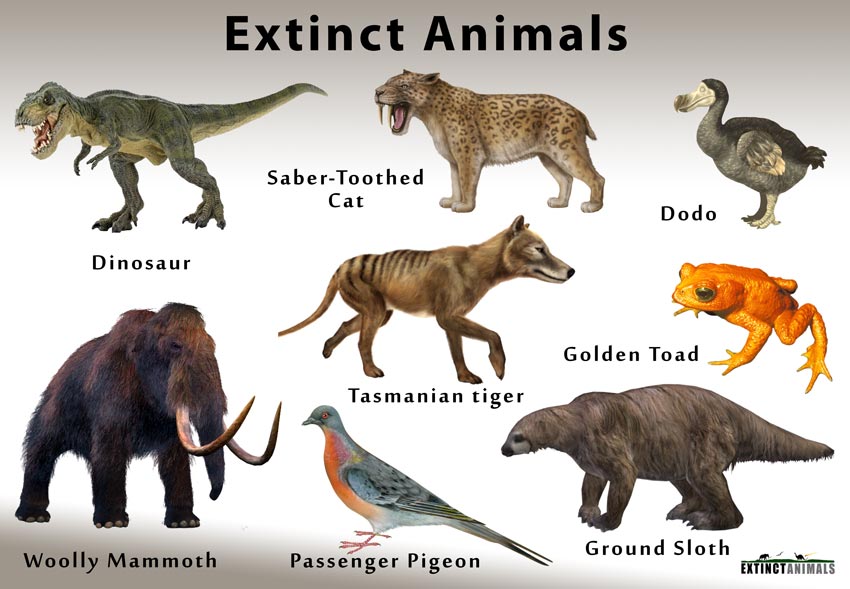Grade 4
Life Sciences
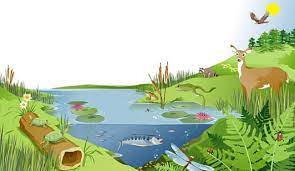 Students in Grade 4 will be introduced to the concept of the cell and how different cells have different functions and form the basic units of various organs in the body. Students will also develop a deeper understnding of the relationship between different living things and their environment, and how living things can affect their environments positively or negatively. In this regard, students will learn the importance of biodiversity and how groups of living things form ecosystems.
Students in Grade 4 will be introduced to the concept of the cell and how different cells have different functions and form the basic units of various organs in the body. Students will also develop a deeper understnding of the relationship between different living things and their environment, and how living things can affect their environments positively or negatively. In this regard, students will learn the importance of biodiversity and how groups of living things form ecosystems.
Chapter 1: Kingdoms of Life
Lesson 1: Cells Lesson 2: Living Things Lesson 3: The Plant Kingdom Lesson 4: How Plants ReproduceLesson 1: Cells
You have already learnt that plants and animals are living things. All living things are made up of cells. A cell is the smallest unit of living matter. So, insects, cabbages and people are all made of cells.
All living things require oxygen, water, food and a place to live. Oxygen is a gas found in the air and in water and it is very important for living things.
Living things can be differentiated from non-living things because living things carry out five life functions as follows:
- Living things reproduce: this means they can make more of their own kind. Birds produce chicks and people produce babies. The chicks (and babies) can be called offspring.
- Living things grow and develop. Living things get bigger with time and undergo developmental changes.
- Living things consume food as a source of energy and other nutrients. Plants make their own food using energy from the sun.
- Living things have the ability to get rid of waste from the food they eat, the air they breath and the liquids they drink. This waste is released from the body as urine, feces or carbon dioxide (the air we breath out). Not all living things produce the same waste material.
- Living things respond/react to their environment. For example, plants grow toward the light, animals cover themselves from cold weather and others.
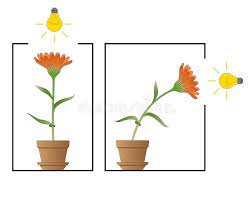
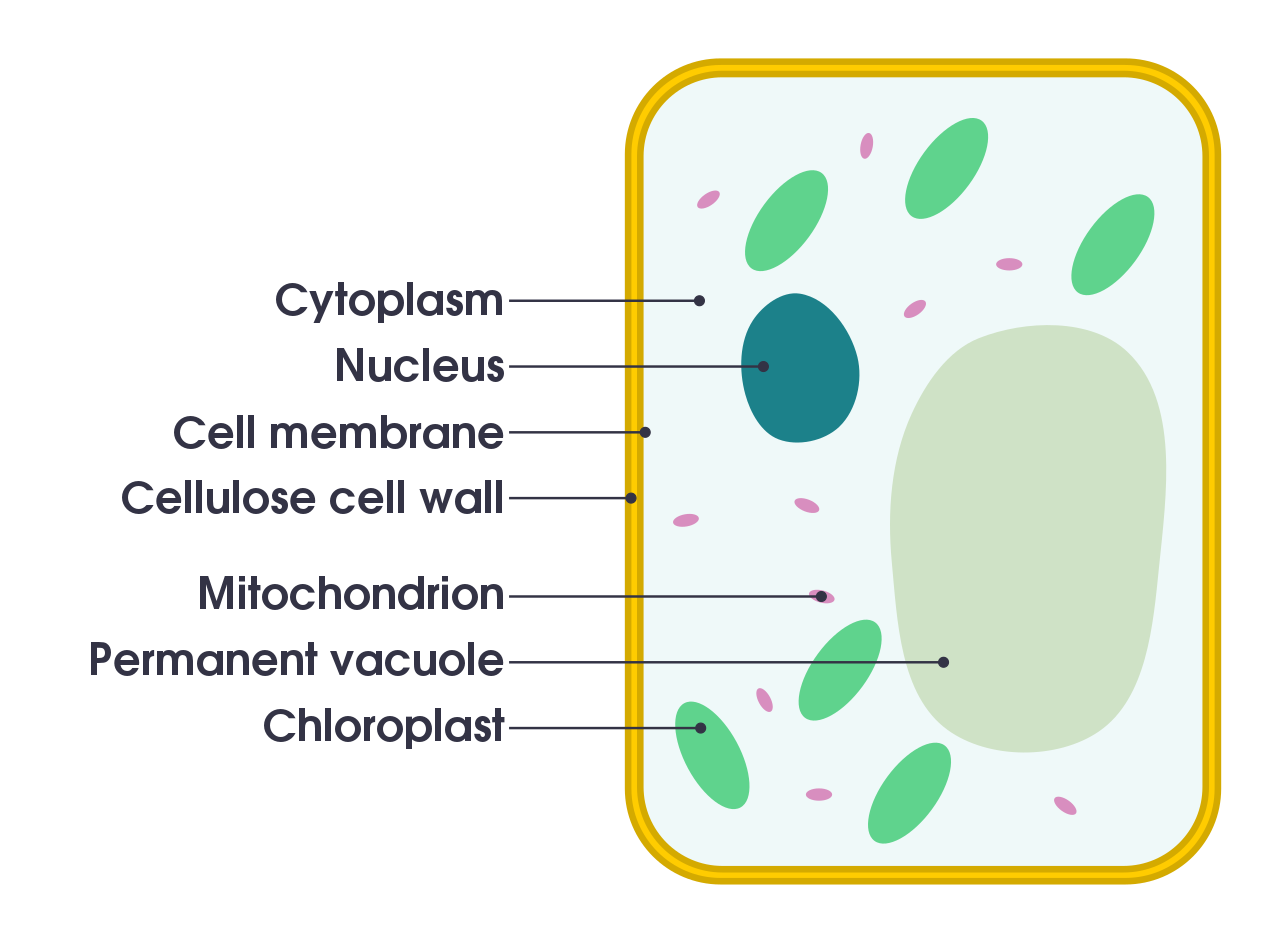
Plant and animal cells have some things in common and also some things are different.
Remember we mentioned that plants can make their own food? This is because most plants have green parts in their cells called chloroplasts. Chloroplasts are green because they are filled with a green substance called Chlorophyll. Chlorophyll helps plants make their own foodby using energy from the sun. Animals do not have chlorophyll.
Plant cells also have a cell wall. As the name suggests, a cell wall surrounds the plant cells and gives the cell a rigid shape. animal cells do not have a cell wall, instaed they have a cell membrane, which is not rigit, so most animal cells tend to be round in shape.

What makes your heart different from your skin? The cells are different! When an organism has many cells, its cells tend to do different jobs.
Cells of the same type (and function) are grouped together to form tissues. Tissues can also group together to form an organ. An organ is a group of tissues that perform a function. For example, the heart is an organ and its function is to pump blood. Many organs work together to form an organ system. The heart, together with blood, and blood vessels make up the circulatory system whose function is to pump and distribute blood to all parts of the body.
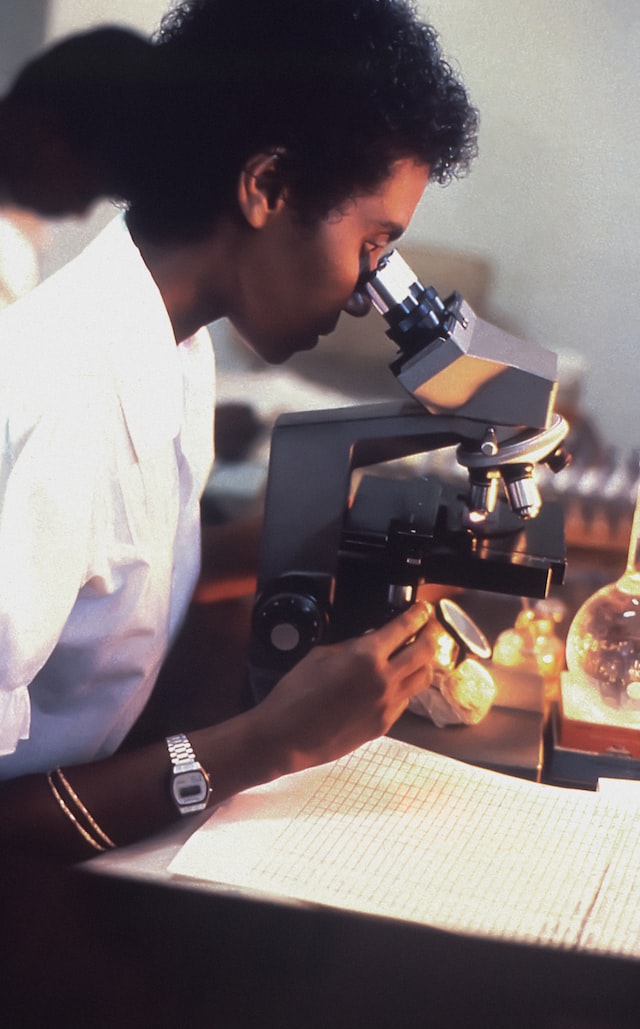
Cells are so so small that you cannot see them with just your eyes. You need to use a Microscope. A microscope works like hand lens, it makes small things look bigger.
Lesson 2: Classifying Living Things
The word classify means to group things that share similar properties together. For example, if you are doing laundry, you group clothes of the same color together. In this case, you have classified clothes using color as the property.
When you are classifying living things, you have to decide what characteristics or properties to use. These properties can also be called traits.
You can use several propoerties to classify living things. Like in the example of clothes, you can first sort clothes based on color, then once you have a hip of clothes of the same color, you can then sort them again based on size, so tht the large white bedsheet will be washed separately from the small white vest. We can call these levels of classification.
There are many ways of classifying living things. Here, we just need you to understand the concept of classification so we will use the example below.
In this example, the highest level of classification is called Kingdom. We can classify all living things into to one of 6 kingdoms namely:
- Archaea or Archaebacteria
- Bacteria
- Protists
- Fungi
- Plants
- Animals
Living organisms can also be grouped using other levels of classifications as shown below:
- Kingdom
- Phylum
- Class
- Order
- Family
- Genus
- Species
There are living things that are only made up of one cell. These are called microorganisms. They are too small you need to use a microscope to see them. Examples of microorganisms include Bacteria.
Bacteria are microorganisms made of one cell. They do not have a nucleus. You might have heard of bacteria as causes of diseases, but not all bacteria cause diseases. Some are not harmful, and some are even beneficial to people.
Fungi are a group of living things that includes microorganisms like yeasts (the one used for making bread) and some larger organisms including mushrooms. Fundi have a cell wall, like plant cells, but do not have chloroplasts and chlorophyll, so they are not green and they cannot make their own food.
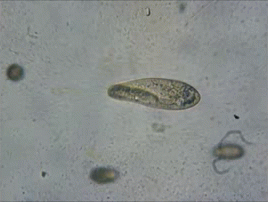
The kingdom called protists is made up of microorgnisms that are more developed and have developed special structures in the cell to perform various functions. One example of a protist is a paramecium (see figure).
There are several other examples of protists such as Amoebas, Giardia, Oomycetes (the cause of the Great Famine of Ireland), Plasmodium (which causes malaria) and slime molds. As already shown, most of these cause disease in humans.
Lesson 3: The Plant Kingdom
All plants need to move water and other nutrients from the ground to their cells. Most advanced plants have tubes for this function but less advanced plants, like mosses, grow close to the ground so they do not need a tube system.
Plants can be classified by using structures such as shape of leaves, shape of roots, types of stems.
Plants can also be classifed by using the presence or absence of seeds, and when present, you can use the type of seeds. Most advanced plants that have a stem, roots and leaves usually also have a fruit and seeds. Some less advanced plants do not have seeds and they reproduce through spores.
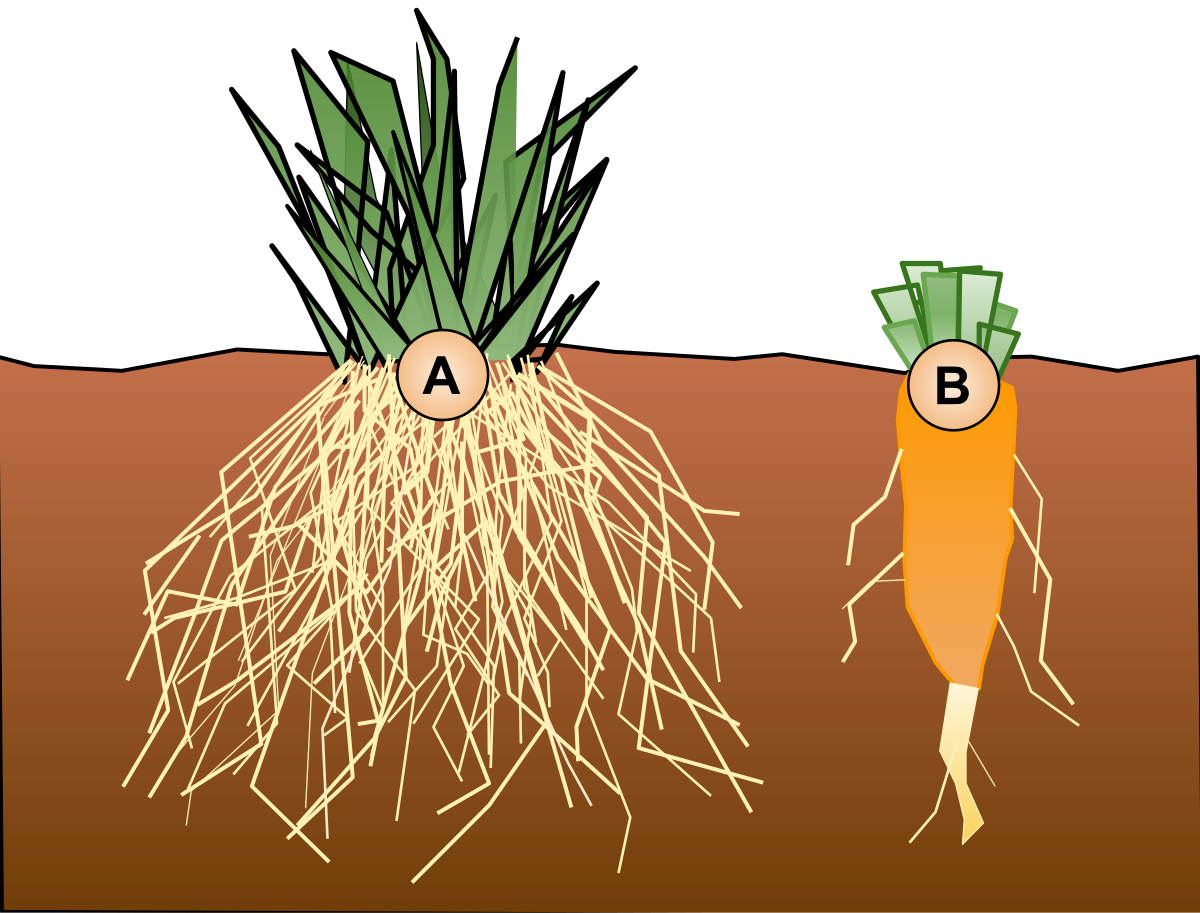
Roots: A plant's roots grow into the ground. They anchor the plant so that it remains firmly held in the soil. Some plant types, such as potatoes and carrots, store food in the root. Some roots are covered with root hairs, which are small thread-like structures that take in water and nutrients from the soil. All roots have the same functions but different plants have different kinds of roots. For example, carrots and dandelions have one large root called taproot while grass has many small roots called fibrous roots.
Stems: grow above the ground and they keep the plant upright. The stem has structures that enable food, water and nutrients to move throughout the plant. Plants may either have a woody stem, which is firm and gives the plant support, or soft and bendable.

Leaves: Plants that have green leaves use the leaves to collect light energy from the sun and use it to make their own food. This process is called Photosynthesis, where 'photo' stands for 'light', and 'synthesis' stands for 'make/create/produce'
The leaves also collect carbon dioxide from the air. plants need this carbon dioxide to produce food in form of sugars. The carbon dioxide enters the leaves through holes called Stomata (one hole is called stoma).
The process of photosynthesis needs the water. Plants obtain water from the soil and the water moves through tubes called veins.
If the plant has too much water, the excess water will be lost through the stomata in the leaves. This process is called transpiration. If the plant has little water and it needs to conserve it, the stomata will close so that there will be no transpiration taking place.
Uses of plants
- Food: plants provide food in form of vegetables, fruits, seeds etc. rice, beans etc are seeds. Lettuce and spinach are leaves. Broccoli and cauliflower are flowers. Carrots abd beets are roots. Tomatoes, apples oranges etc and fruits.
- Medicines: Some plants have medicinal properties such as pain relief, and relief from stomach upsets.
- Furniture and building: Plants can be made into lumber that can then be used to make furniture or build houses.
- Fuel: Plants can be used to make firewood that can be burned to produce heat to warm houses, or for cooking.
- Some plants produce fibre that can be used to make clothes, such as the cotton plant.
Lesson 4: How Plants Reproduce
All living things can make more of themselves. This process is called reproduction.
Flowering plants use flowers to reporduce. Flowers have male and female parts. The male part is the stamen which includes the anther. The anther makes pollen that has the male sex cells. The female part of the flower is the pistil which includes the ovary. The pistil makes the female sex cells - eggs.
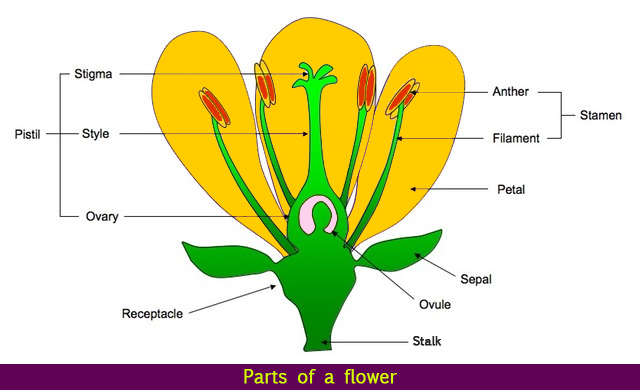
Pollination
Pollination is the process of moving pollen from the anther to the pistil. This may be achieved by wind or by birds, insects and other pollinators. For instance, bees visit flowers so as to feed on nectar, a sweet liquid inside the flower and in the process, pollen sticks on the bees body and the bees carries this pollen to the next flower where the pollen will fall from the bees and could land on the pistil.
Fertilization
Once the pollen is on the pistil, the pistil develops a long tube that enables the pollen to move through the pistil to the ovary. Fertilization is when the pollen (the male cell) joins in the female (eggs) to form a seed.
Germination
Germination is the process where a seed sprouts and produces a root and a small stem. One or two leaves appear on the stem.
Seedlings
A seedling is the young plant that grows from the seed. seedlings need water, sunlight and nutrients for growth. If the seedling gets all these needs then it will grow bigger and into an adult plant.
Plant maturity
A plant achieves maturity if it grows to the point where it can produce flowers and eventually seeds. These seeds are the same that will be used to grow a new plant. This can be referred to as the plant's life cycle. Some plants produce seeds and then at the end of the season they die. Other plants produce seeds and they also continue to grow and produce more seeds in subsequent years.
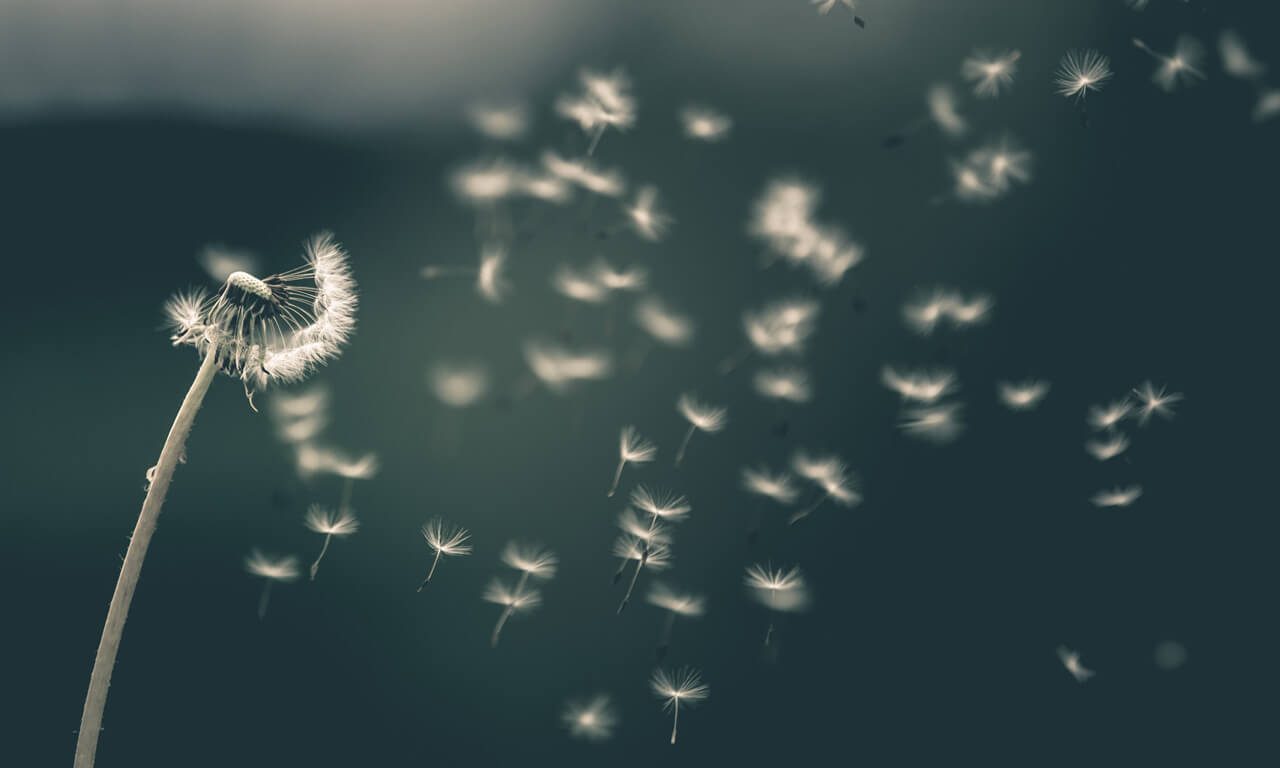
Seed Dispersal
As mentioned before, the importance of seeds is to grow and produce more plants. There are benefits in the seeds being moved to a different location to grow there so as to spread to other sites and also reduce the risk of death if the previous site is destroyed. Plants have developed several methods to ensure they are dispersed from one location to another. For example:
- Some seeds have prickly surfaces that attach on clothes or animals skin and that way they can be moved form one location to another.
- Some other seeds are surrounded by tasty fruits and animals eat these fruits together with the seeds and they will transfer them to other locations in through their feces.
- Some seeds are light and have structures that enable them to be carried by the wind.
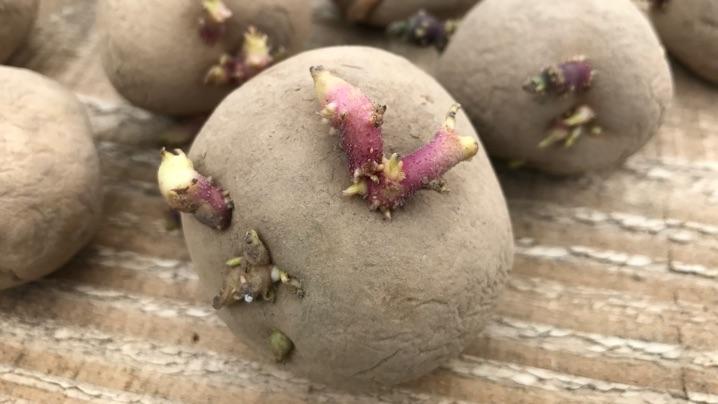
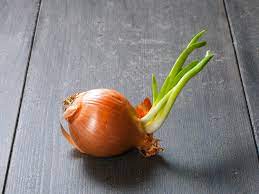
Other ways Plants can Reproduce
Some plants can reporudce without requiring the germination of seeds. Some of the other ways pnats can reporudce include:
- Runners: A runner is a stem that grows along the ground and can make new plants. Strawberries can reproduce this way.
- Cuttings: A cutting is a part of the plant that when clipped can produce a new plant. This usually requires the cuttings to be put into water where roots will develop then these cuttings can be transferred to the soil.
- Bulbs and Tubers: For example, potatoes are tubers, and onions are bulbs. You have probably seen onions or potatoes grow shoots if they stay for too long in the pantry.
Plant Genetics
Let us discuss here the very basics of plant genetics and inheritance. Plants usually have characteristics similar to their parents. The passage of these characteristics from the parents to the 'offspring' is called Inheritance. The characteristics are called traits.
The concept of inheritance means people, such as farmers, can choose the plants with traits they like and take seeds from only those desirable plants. If they plant these seeds, the future plants are expected to be more desirable.
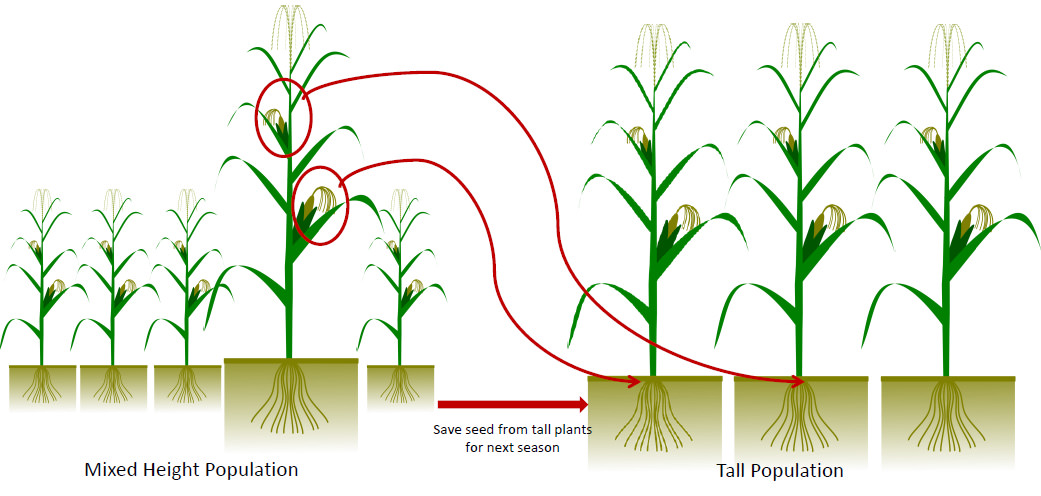
Lesson 1: Introduction to Ecosystems
In Grade 3, we defined an ecosystem to be made up of all the living and non-living things that function together in one place. The living things are called Biotics factors and the non-living things are called Abiotic factors. Biotic factors include all the plants and animals living in the ecosystem. Abiotic factors include all the elements that affect the plants and animals, such as the temperature, type of soil, water, rocks, etc.
Each organism in an ecosystem has its own place where it lives. This is called a habitat.

Living things in an ecosystem depend on each other to survive. This relationship maybe beneficial, like when a bees obtains nectar but also results in pollination, but in other cases, this relationship may be negative, like when a bear feeds on salmon.
In Grade 3, we also defined the word population, we indicated that a population consists of all the members of a species that live a specified geographical area. For example the number of giraffes in a specified national park. When many populations (i.e., many different specieis) are considered together, it is called a community. So a community will include the number of giraffes, lions, cheetahs and all other species in the national park.
Lesson 2: Relationships in Ecosystems
In an ecosystem, each type of living thing needs different food.
Plants produce their own food.
Herbivores eat plants.
Carnivores eat herbivores.
Omnivores can consume both plants and animals.
Decomposers utilize dead and decaying matter into waste and simpler substances.
Plants are called producers because they produce their own food. Animals are called consumers because they eat, or consume, other living things. Plants are essential to ecosystems because they produce the food which all other living things need. To represent how living things feed off other living things in an ecosystem, we can use a food chain.
Competition: Sometimes living things have to compete to get what they need. This is called competition. Predators compete with each other. For example, lions and cheetahs hunt the same herbivores. Plants in a forest compete for sunlight.
Cooperation: When living things help each other to survive in an ecosystem, this relationship is called cooperation. For example, a tree may provide a home for a bird's nest. Bees can pollinate flowers.
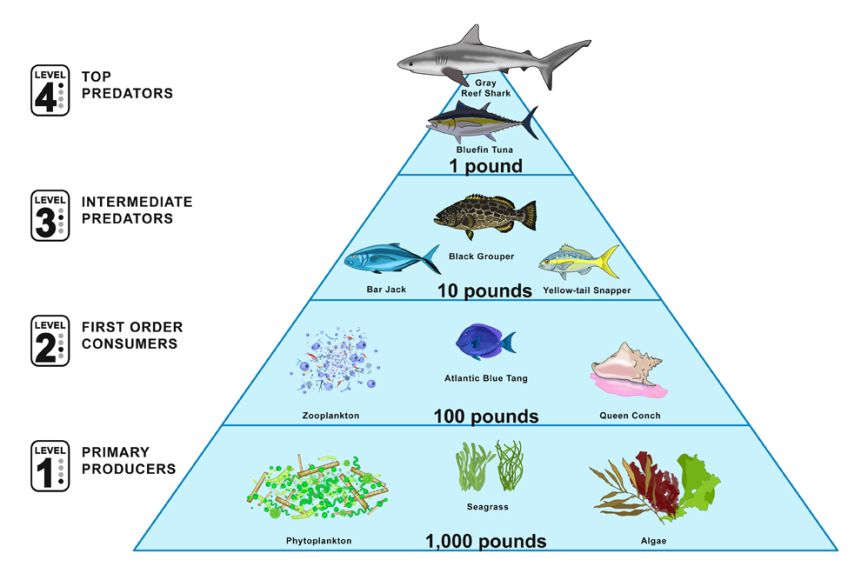
Energy Pyramid: Whenever we consume food, we do not use up all the energy available in that food. Some of it is wasted. For example, plants use the energy from the sun to produce their food. However, when herbivores and omnivores eat the plants, they cannot be able to extract all the energy. In fact, only about 10% of energy is transferred from one level of the food chain/web to the next. An energy pyramid is a representation of the energy transferred from one level of the food chain to the next, with producers at the base of the pyramid.
Lesson 3: Plants and Their Surroundings
Plants can respond to their environment, even though they cannot move. A stimulus is something in the environment that can be detected/sensed by living organisms and can cause the living organismm to respond.
Plants can respond to light, water and gravity. They respond to light by growing towards the source of light. Plants roots can also grow toward a water source. Plants roots also grow in the same direction as the pull of gravity.
The response of a plant to something in the environment is called Tropism.
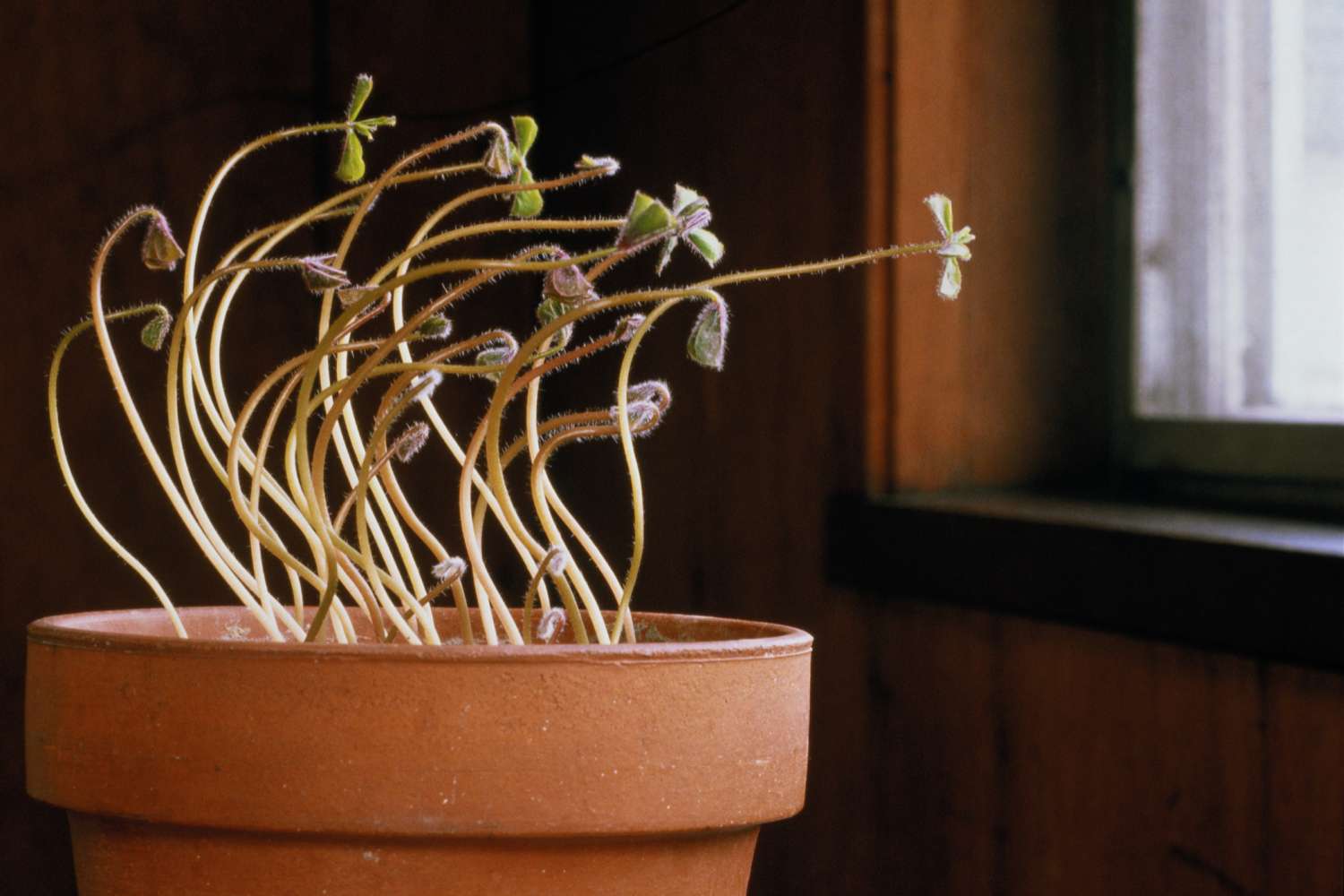
Living organisms develop adaptations to be able to survive in the environment where they are growing. For example, pine trees are adapted to living in the cold winters without losing their leaves. Some tree species are adapted to living in cold weather but they lose their leaves during fall. The cactus is adapted to living in the desert because it has soft tissue that holds water like a sponge. We have already discussed how various seeds have developed adaptations to enable them to be dispersed.
Lesson 4: Plants from the Past
Researchers use clues from fossils to learn about the Earth's past. A fossil is evidence of an organism that lived long ago. Fossils also inform us of the ecosystems of the past. For example, you might observe marine fossils in a place that is no longer an ocean might indicate that that location was once an ocean.
Most fossils form in layers of sedimentary rocks. When an animal or a plant dies, the soft parts quickly rot or may be eaten, and the hard parts of the animal/plant last longer. These hards parts include bones, seeds, seed pods, shells, teeth, and wood. These hard parts are more likely to become fossils.
Molds and Casts
Shells leave behind fossils known as molds. A mold is a hollow form with a specific shape that forms when water sips into the spaces of the rock where an organism is burried. The water washes the shell and leaves a hollow space called a mold. If minerals build up inside the mold it forms a fossil called a cast.
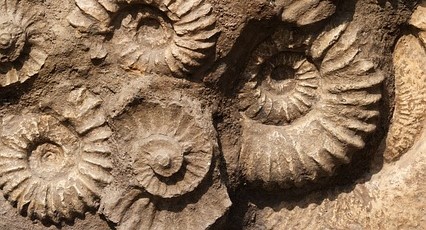
Another kind of fossil is called an Imprint fossil. This is when the body or body part leaves behind an imprint by pressing on a surface. It could be a footprint, leaf imprint or a body outline.
A stony fossil occurs when wood or bones become petrified into stone. The organism becomes a solid rock fossil.
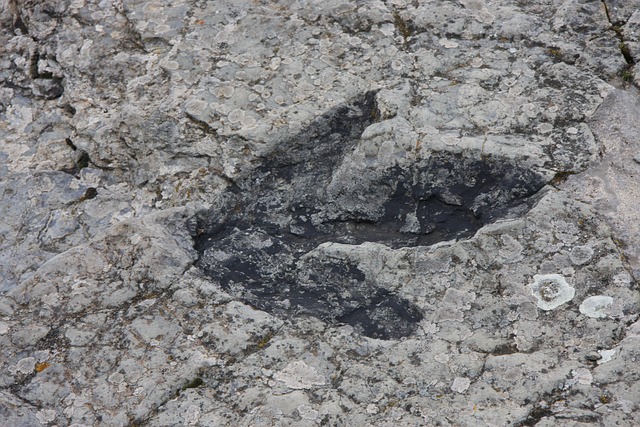
Geological time: Geological time refers to the number of years, usually in millions or billions, that the earth or a sample obtained from the earth has existed for. We can use geological time to define the age of fossils or other samples obtained from the earth. It defines the earth's history.
Rock layers: Sedimentary rocks are formed by several layers of sediments that harden over time to become rocks. You expect that layers that are at the bottom were formed earlier, therefore are older, than layers that are ontop.
Fossil Fuels
A fossil fuel is a type of energy that formed millions of years ago from the remains of buried trees, plants and animals. Fossil fuels are non-renewable resources because once they are used they cannot be created again. Some fossil fuels are harvested in a crude form and need to undergo a refining process for them to be useful. Once refined, fossil fuels have to be burned for them to release energy. When fossil fuels are burntto produce energy, they also release some gases that have harmful effects to the environment.
Coal is one of the most important fuel sources for heating houses and was also common is steam engine trains and other types of engines. Coal is a fossil fuel that was formed about 300 million years ago after the death of several trees and plants. In those years, there was heavy vegetation in some parts of the earth with huge trees measuring over 20 meters tall. A sudden change in the climate resulted in those trees dying and over time were converted into coal and other types of fossil fuels. You will learn more details about this process in grade 5 and 6.
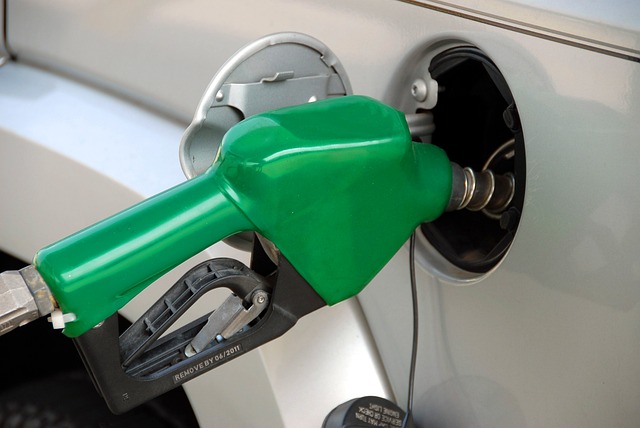

Alternative Energy Sources: Because fossil fuels are non-renewable and cause air pollution, there is need to identify and utilize energy sources that are environmentally friendly. Scientista re always looking for other ways to produce energy.
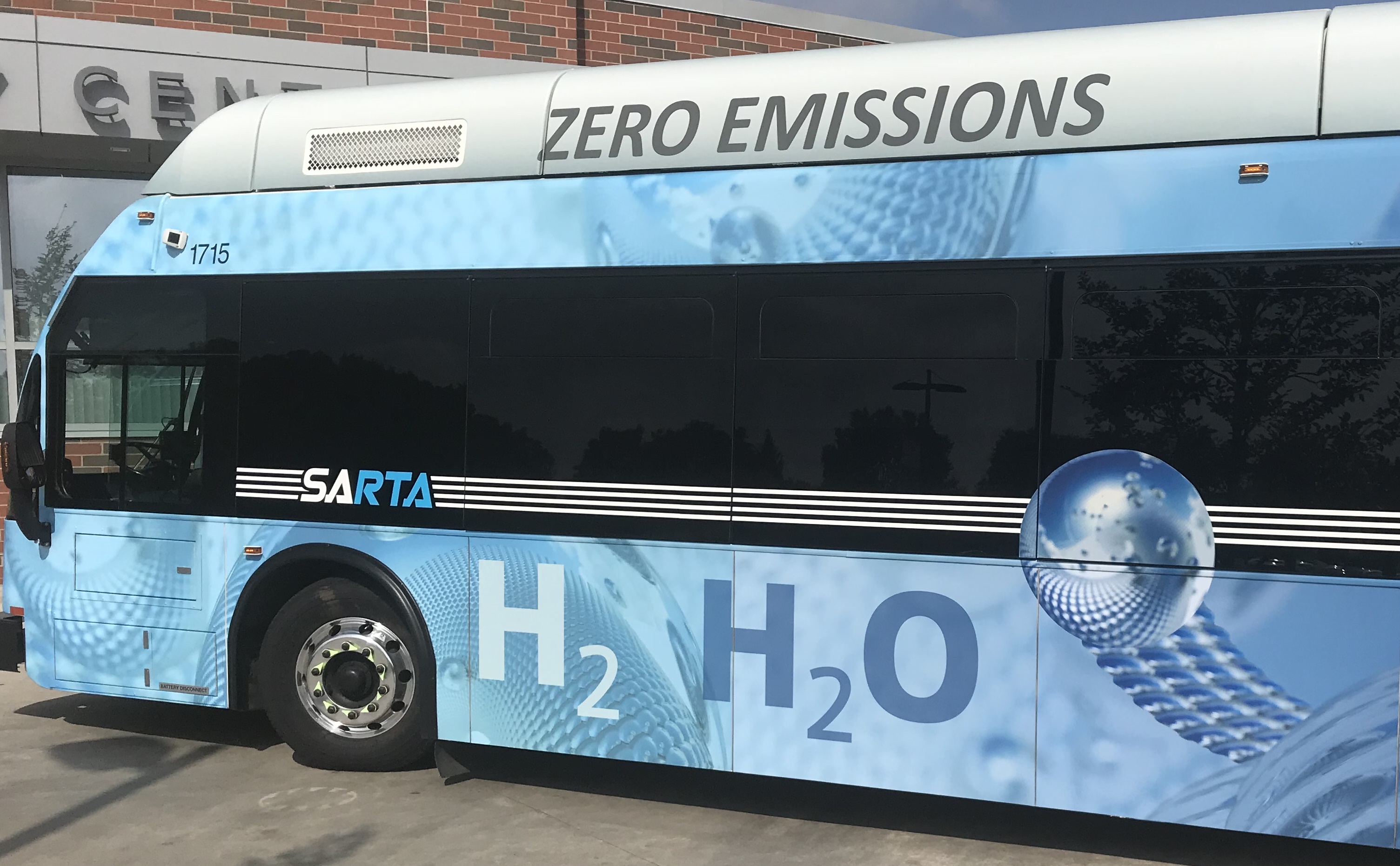
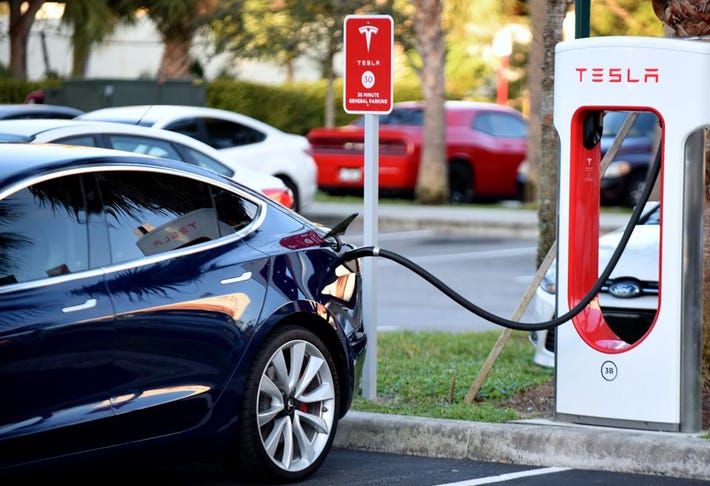
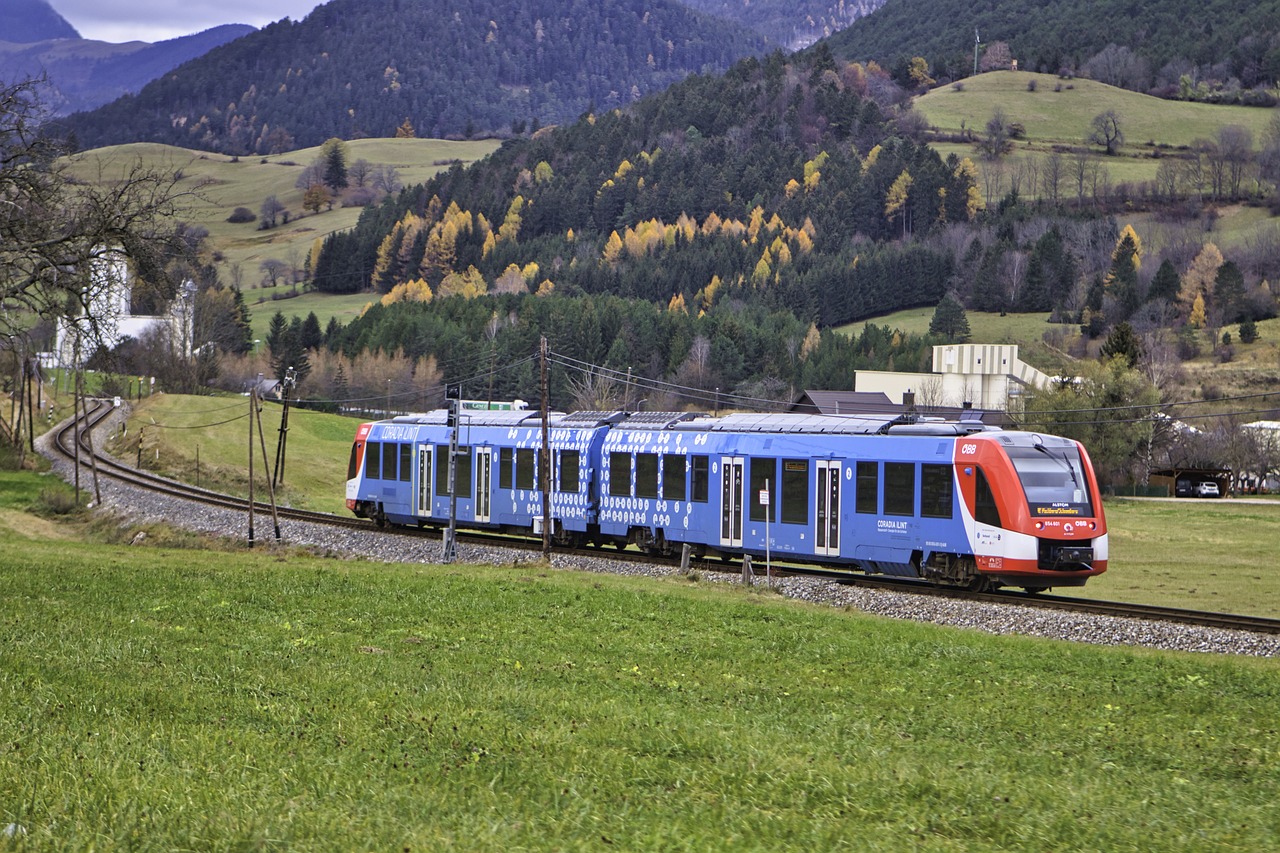
Extinction:
When the climate changes too significantly, some living things fail t adapt to the new environment and they die and disappear. This is called extinction.
When the number of individuals in a species becomes too small, that species is said to be endangered. Endangered species are at a high risk of becoming extinct if their numbers reduce further and more of them are dying than the numbers being reproduced.
